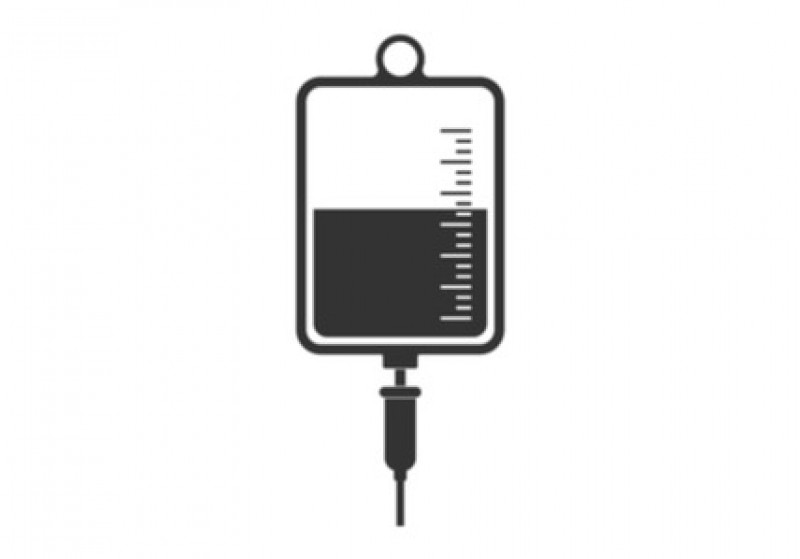
Dopamine works in the body by binding to alpha-1 and beta-1 receptors to increase peripheral arterial and venous constriction and increase cardiac contractility and heart rate. Alpha-1 receptors are found in smooth muscle vasculature and control vasoconstriction. Beta-1 receptors are typically found in the heart and control inotropy and chronotropic. In lower doses (1-5 mcg/kg/min), dopamine mostly affects the renal arteries, and in larger doses (5-20 mcg/kg/min), it increases the inotropic and chronotropic effects on the heart and systemic vasoconstriction. This is important because, in lower doses, it does not affect cardiac contractility and may not increase blood pressure; it may, however, increase urinary output and may also improve pulmonary edema due to increased fluid excretion from the body. Dopamine increases blood pressure in hypotensive patients due to cardiogenic or septic shock. It is contraindicated in hypovolemic shock as the patient needs fluid replacement and blood, not to increase vasoconstriction, which can lead to tissue ischemia.
How do you know when to use Dopamine? Dopamine is useful in cases where the patient is hypotensive and likely vasodilated due to cardiac arrest, anaphylaxis, or sepsis or when the heart is not contracting hard enough or fast enough. This is especially useful after a cardiac arrest in which fluids have been given, but the patient is still hypotensive, and you do not want to fluid overload them and cause pulmonary edema. It can also be used in patients with a heart block and bradycardia to help maintain blood pressure and increase the heart rate. In short, dopamine can be considered if hypovolemia has already been addressed, yet the patient is still hypotensive due to bradycardia or diffuse vasodilation. Dopamine is not considered a first-line medication in sepsis or anaphylaxis. Epinephrine should be used first. However, if it is unavailable or per medical direction, dopamine can also be used in these cases.
Why is dopamine not a first choice for treating patients with bradycardia or vasodilation? Dopamine has a long list of side effects and a narrow therapeutic window. Some of the adverse effects of dopamine include ventricular arrhythmias, atrial fibrillation, ectopic beats, hypertension, an increase in anginal pain, palpitations, widened QRS complex, abdominal pain, nausea, vomiting, headache, anxiety, and sodium/potassium imbalances. Why is this? The ionotropic effects cause increased oxygen demand by the heart, and the increased contractility of the heart can cause hypertension. The chronotropic effects can cause dysrhythmias if multiple pacemaker cells are stimulated at once, resulting in disorganized firing in the heart. Increased anginal pain can come from the increased load on the heart, and systemic vasoconstriction, as it is forced to work harder. The abdominal pain and nausea/vomiting come from vasoconstriction in the gastrointestinal system, and the headache may also result from vasoconstriction. Sodium and potassium imbalances may be the result of increased urine excretion. Lastly, anxiety and many other psychological symptoms result from the sympathomimetic effects of dopamine. Why is this important to know? We often have patients with multiple co-morbidities, and when considering administering a strong sympathomimetic, we need to consider how it will affect other systems in the body, not just the blood pressure. We do not want to solve one problem but cause three others. Therefore, if the bradycardia can be effectively managed with atropine, that is preferable as it has less of a systemic effect and will not cause diffuse vasoconstriction and possible tissue ischemia.
So, you have decided to give dopamine to your patient, but how do you do it? Dopamine can be given intravenously and intraosseously. Depending on your agency and what you carry, you may need to mix up an infusion, or you may already have premixed bags. The starting concentration will vary based on your department, but dopamine is commonly carried in 40, 80, or 160mg/ml vials or 80, 160, or 320 mg/100 ml bags. So become familiar with what your agency carries. If you have the vials, you must mix them into a bag to create an infusion. It is important to remember to use a microdrip or (60 gtt/ml) set as you will need to titrate the drops to give the proper dose to your patient. Say you have a 160 mg/100 ml solution, an 80 kg patient, and you will start at 5 mcg/kg/min; you know you need 400 mcg/min. Your solution is 1.6 mg/ml or 1600 mcg/ml. How many drops per minute should you administer? Well, you know you have 1600 mcg/ml, and you need 400 mcg/min, so you need 0.25 ml/min. And your drip set is 60 gtt/ml, so you need 15 gtt/min, or 1 drop every 4 seconds.
Now that you have your drip running, what do you do next? It is important to constantly monitor your patient to determine if the drip is having the intended effect. Is the blood pressure rising, is the heart rate increasing? Are they appearing to improve, or do they appear to be worsening? Are they developing any adverse effects, such as widening QRS? Additional dysrhythmias? If they are conscious, are they complaining of chest pain, abdominal pain, or nausea?
Another thing to remember is to frequently check the patency of the IV or IO, as dopamine can cause tissue ischemia if it extravasates (as it is a vasoconstrictor). Use the minimum dose necessary to achieve your desired results. Additionally, dopamine is not compatible with sodium bicarbonate. So if you are administering sodium bicarbonate and dopamine, you will need two separate IVs and lines.
In summary, for patients who are bradycardic and not responding to atropine, or patients who are hypotensive due to vasodilation (i.e. cardiac arrest, sepsis, or anaphylaxis) and are not hypovolemic, dopamine may be used to improve their outcomes. It is a potent sympathomimetic and can be effective at promoting vasoconstriction as well as the chronotropic and inotropic actions of the heart.
References
- Girardeau, R. P. (2014, September 15). Use of Antihypotensive Medications in Shock Patients. JEMS. Retrieved December 5, 2022.
- Intropin (dopamine) dosing, indications, interactions, adverse effects, and more. Medscape. (2019, September 28). Retrieved December 5, 2022, from https://reference.medscape.com/drug/intropin-dopamine-342435
- Dozens of courses and topics
- State-specific requirements
- We report to CAPCE in real time


